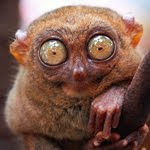
Francis Bacon, Three Studies for a Crucifixion, 1962, oil on board, each panel 198.2 x 144.8 cm, Solomon R. Guggenheim Museum, New York
Bacon, letter to Michel Leiris, November 20th, 1981: "For me, realism is an attempt to capture the appearance with the cluster of sensations that the appearance arouses in me."

Francis Bacon, Two Figures, 1961. Oil and sand on canvas, 198.5 x 142 cm. Edward R. Broida Collection, Los Angeles
New Figuration. A very broad term for a general revival of figurative painting in the 1960s following a period when abstraction (particularly Abstract Expressionism) had been the dominant mode of avant-garde art in Europe and the USA. The term is said to have been first used by the French critic Michel Ragon, who in 1961 called the trend "Nouvelle Figuration" (Ian Chilvers, The Oxford Dictionary of Art, 2004).
Nouvelle Figuration. La Nouvelle Figuration est un mouvement artistique qui fait la transition entre l’abstraction et une figuration dite narrative. Dès 1958, la mise en place d’un régime présidentiel invite un certain nombre de peintres abstraits à traduire leur ressenti face à une actualité menaçante. Ils s’affranchissent de la neutralité du signe par le passage du signifiant au signifié.
Un esprit frondeur traite avec insolence les sujets les plus graves : les dangers du nucléaire, les effets de la psychanalyse sur l’aliénation, l’envoi d’un homme dans l’espace, l’accouchement sans douleur, l’attentat entre factions rivales, la circulation automobile arrivée à saturation, etc. (WKP).
Un esprit frondeur traite avec insolence les sujets les plus graves : les dangers du nucléaire, les effets de la psychanalyse sur l’aliénation, l’envoi d’un homme dans l’espace, l’accouchement sans douleur, l’attentat entre factions rivales, la circulation automobile arrivée à saturation, etc. (WKP).









No comments:
Post a Comment